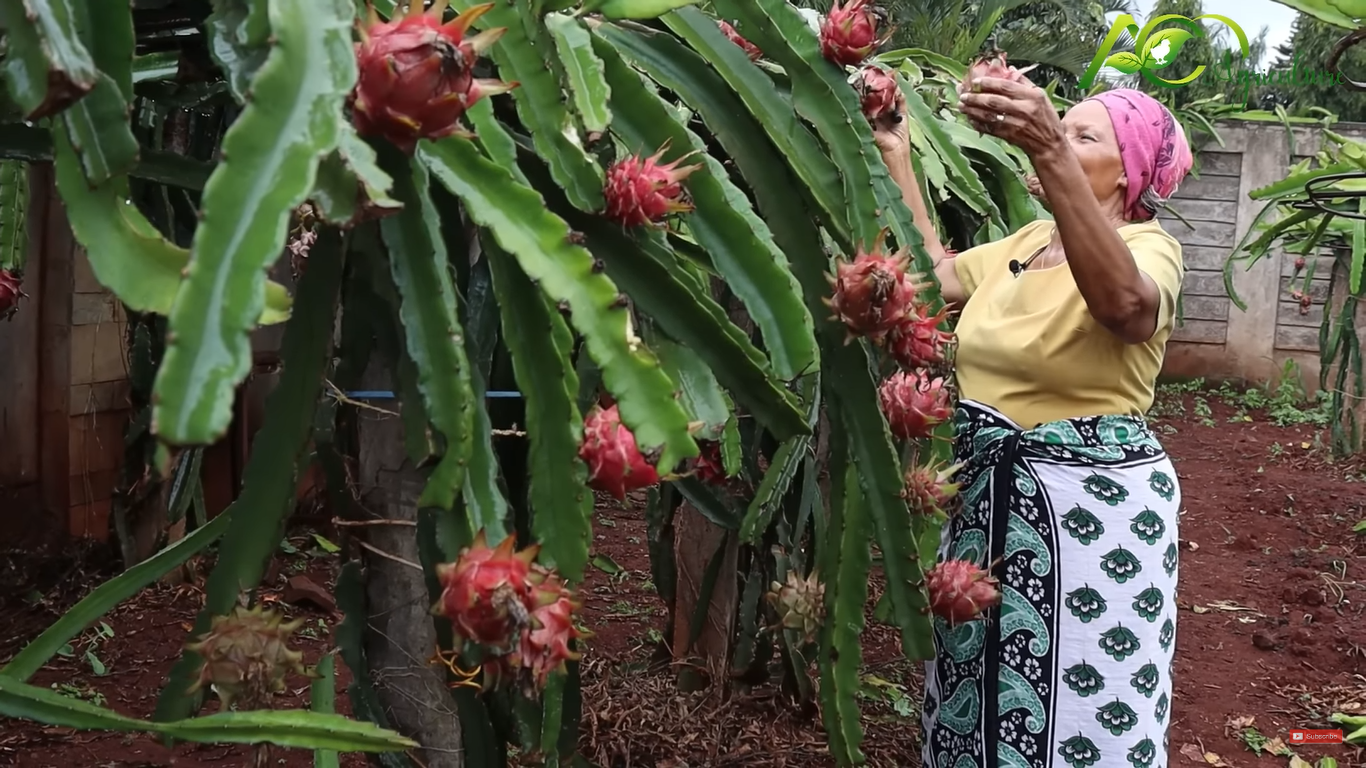Dragon fruit, also called Pitaya is one of the rare yet profitable crops in Kenya. The tropical fruit which belongs to the cactus family is known for its vibrant colors and unique taste.
According to experienced farmers, dragon fruit can yield an average of 6500 kg per acre during the first two years. As the tree progresses, the yield increases to 10,000 to 12,000 kg per acre. Each dragon fruit is normally around 300 – 1000 grams in weight.
A single fruit fetches between Sh400 and Sh600 during the low and high seasons, respectively. The weight of a single fruit is an added advantage, as three fruits are sufficient to make a kilogram. One kilogram can sell for up to Sh1500.
The main reason why the fruit is so expensive is the low supply against a high demand. Philomena Maloba is one of the farmers earning big from dragon fruit farming.
Her farm behind St Peter’s ACK Parish in Ahero, Kisumu County, hosts 400 plants that bear beautiful pink fruits.
Narrating her journey, Philomena revealed she started the venture in 2022 with a Sh400,000 loan. What began as a side hustle has now flourished into a money-minting empire that also trains other farmers on dragon fruit farming.
“All along, I had been inspired by Wambugu Farm in Laikipia. It is known for Wambugu apples, but produces dragon fruits as well,” she says.
The farmer started with 200 seedlings bought from Wambugu Farm at Sh1,000. According to her, Dragon fruit can be propagated from seeds or stem cuttings.
Meet young Kiambu farmer making millions from dairy farming
Using stem cuttings is the most reliable method of propagating dragon fruits. The cuttings should be selected from healthy, vigorously growing, and mature stems. They should be 30 to 45cm long and have at least one node.
“Before placing the order for seedlings, they insisted we had to place poles and prepare the land. We settled on concrete poles, which will last many years. Wooden poles easily rot with time,” the 60-year-old says.
While the dragon fruits does note require too much water, drip irrigation comes in handy during dry spell. Farmers should also watch for pests like mealybugs, aphids, scales, fruits flies and thrips and viral and bacterial diseases, including antharcnose, bacterial soft rot, stem canker, root rot and yellowing.
Maloba fertilizes the plants organically with goat and chicken manure. She notes that during growth, the fruits are usually green but become red or yellow on maturity, depending on variety.
“The first plants took almost a year to mature. The first fruits were few. I consulted our mentor who assured us that the number would increase with time,” the farmer says.
She harvests at least 15 fruits from one tree in peak seasons. A fruit is 350g to a kilo. This depends on the practices applied by the farmer. A fruit sells for Sh300 to Sh1,000.
“Most buyers come to the farm. I have had customers from as far as Kisumu, Kakamega, Keroka, Kisii, Eldoret and Nairobi,” the farmer says.
Maloba doubles up as a trainer and trains the community to produce the crop including cultivation and value addition. She sells a seedling for Sh500.
Did you love the story? You can also share YOUR story and get it published on Bizna Click here to get started.




